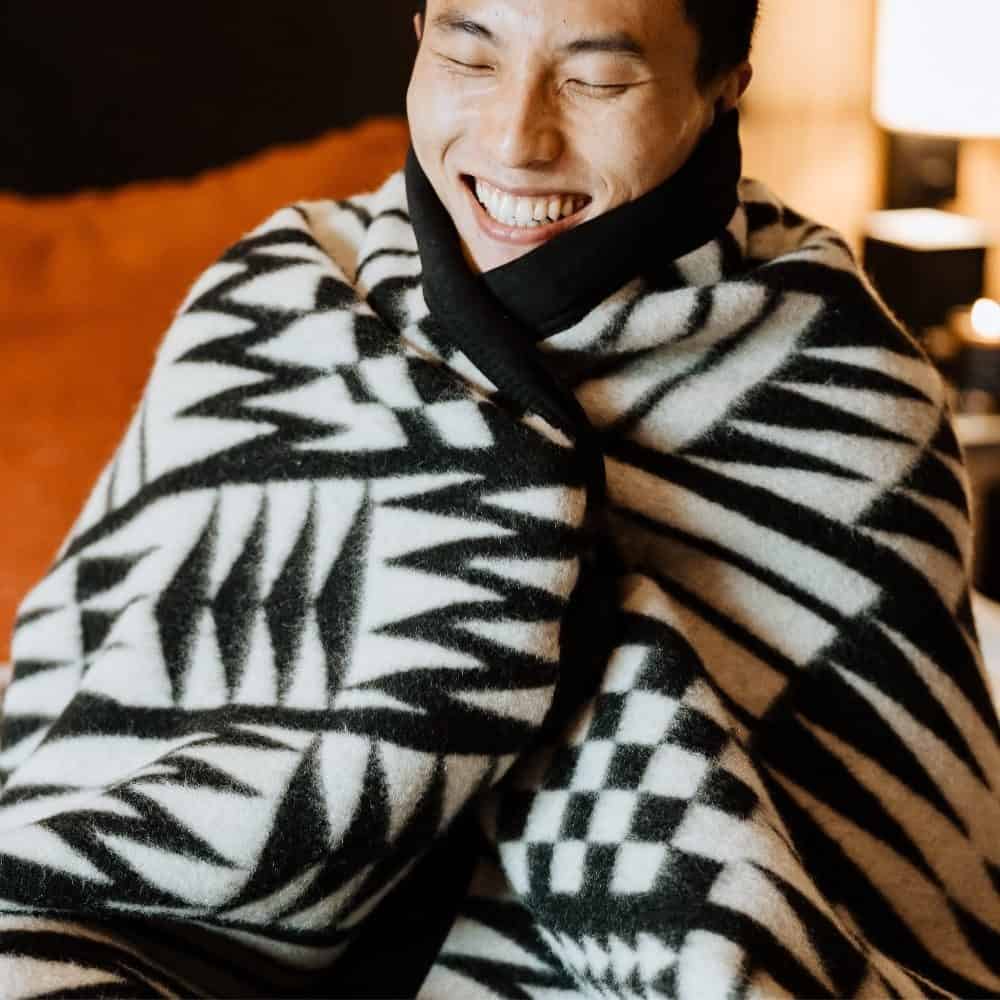Food & Drink
Designing for Dignity
After witnessing the last few weeks of her grandmother's life, one Seattle woman tackled a redesign of the ubiquitously disliked hospital gown
By Rachel Gallaher August 28, 2023

This article originally appeared in the July/August 2023 issue of Seattle magazine.
Tammera Mason remembers her grandmother, Eleanor, as a glamorous woman. Born and raised in an immigrant family in the Midwest, Eleanor used fashion as a way to fit in, and her granddaughter talks with fondness of her perfectly coiffed hair, printed scarves, and movie star sunglasses — all visual indicators of her outgoing personality.
“Eleanor was full of grace, and she loved attention,” Mason says with a smile. “She was the life of every party, and she loved having just one more outfit to put on.”
In 2016, when Eleanor became sick and was eventually put on palliative care, Mason, a Seattle resident, flew to Michigan to help care for her grandmother in her final weeks. “Her body was changing, and we were running back and forth into medical supply stores, and trying to find her something comfortable that would be bring her a sense of dignity,” Mason says. “Both medical staff and patients agree that it’s hard to find a gown that fits the body well, gives [doctors and nurses] the access they need, and allows the patient to feel dignified and not overexposed.”
For Mason — who recently launched reinvented hospital wear under the brand Arkëras — seeing her once-strong, fashion-forward grandmother in such a vulnerable position was incredibly difficult. Like many at the end of their lives, Eleanor needed to use adult diapers and eventually under-body pads. Sometimes there was only a blanket covering her as family and medical staff tended to her increasing physical needs.
Mason recalls visiting her grandmother, who was clad in a standard issue hospital gown that did not provide the modesty she was used to. “There was a point where she couldn’t speak anymore, but I remember her eyes were speaking,” she says, “and she wasn’t comfortable.”
After Eleanor’s passing, Mason retreated to her family’s cabin in the San Juan Islands to mourn. In addition to feeling grief over losing her grandmother, she experienced a profound sadness when thinking about the scratchy, ill-fitting gown that Eleanor — and anyone else in a hospital or clinical setting — had to wear during her final weeks.
A lifelong artist, Mason started sketching as an outlet for her pain, reimagining the traditional hospital gown — the design of which hasn’t changed in more than 100 years — with comfort and dignity in mind.
“For me, part of the healing process was taking scissors to fabric and creating something that might have brought my grandmother comfort at the end of her life,” Mason says. “I was thinking about rich fabrics and soft textures and the idea of cocooning or wrapping oneself up.”
After three years of research and development — which included consulting a registered nurse and an occupational therapist, hiring a patternmaker, learning about sustainable fabrics and packaging, testing out manufacturers and conducting focus groups — Mason launched Arkëras.
Comprising three styles, including a gender-neutral option, in three color and fabric choices, the collection of adaptive hospital gowns is soft and stylish, with considerations such as limited mobility, the need for access to certain parts of the body, and the importance of patients feeling confident about what they are wearing.
Tammera Mason’s late grandmother, Eleanor
Photo courtesy of Arkëras
“There are studies that show that someone’s mental and emotional state can have a big impact on their healing process,” Mason says. “I want to help people feel like a person and not a patient.”
Arkëras garments aren’t just for end-of-life scenarios. Mason notes that whether it’s a person going into labor, getting a mammogram or laid up at home with a broken limb, Arkëras has easy-to-use solutions for all of life’s difficult or transitional situations.
“I would like to see our gowns reaching the local health care community,” Mason says. “I hope they can add some positivity, and a sense of agency, to people’s health care journeys.”




